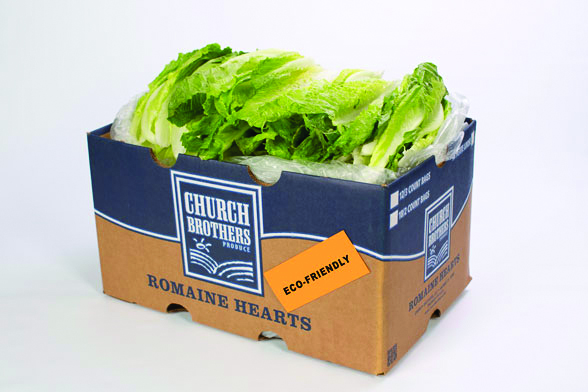The Nunes Company launched its Broccoleaf product more than a year ago as a way to utilize a part of the broccoli plant that was discarded. The item has been well accepted and has received kudos from food writers across the country.
At the time, Matt Seeley, vice president of marketing for the firm, said it was akin to the meat industry’s “nose to tail” effort. Proponents of that foodservice cooking movement strive to utilize the entire animal in food preparation, thus more efficiently utilizing the natural resources needed to raise that animal.
Seeley said The Nunes Company was researching other byproducts of its vegetable production that might also have utility, such as cauliflower leaves. Recently, Church Brothers, another leading grower, processor and shipper of fresh vegetable from Salinas, Calif., launched a similar program championing the same concept. The company is calling its play in this emerging food trend #ImperfectVeg, and claims it helps reduce food waste and water usage.
Just like the Broccoleaf, the idea is to sell edible fresh produce items that were previously discarded or not harvested. Church Brothers is concentrating not on brand new items but products that were not sold because they were below industry standards for cosmetic attributes. The company launched its new product line in July, introducing it at the Produce Marketing Association Foodservice Conference in Monterey, Calif., as the items are targeted to that sector of the industry.
“The trend is going viral in the foodservice sector due to the Compass Group helping tell the #IDP story and build awareness with restaurant operators, chefs and consumers,” said Vince Ballesteros, Church Brothers vice president of business development, in a press release touting the idea. “We are seeing more support and requests for these edible and nutritious fresh produce items and we’re working with our distribution partners to make the introduction and implementation of these products successful.”
The company launched the concept with a handful of items including romaine leaves, cauliflower, broccoli floret bits, a cascade mix, and a second crop kale blend, baby chard blend, and clipped spinach product.
In that company press release in July, Kori Tuggle, vice president of marketing for the firm, said this emerging trend is a gift to the produce industry and its growers. “Ideally, if we are able to educate chefs on what they are receiving, the #ImperfectVeg could be more acceptable with the foodservice sector as consumers choose off a menu description; compared to at retail where shoppers buy with their eyes.”
Reached in mid-September, a couple of months into the program, Tuggle said: “Our customers are still working on educating operators and chefs about the product, its advantages and the sustainability story behind each item that they have the opportunity to share on their menus.”
She said that while expanding the product line is always top-of-mind, currently, the company is concentrating on establishing the initial releases and soliciting feedback from chefs, as well as helping them tell the story to their restaurant patrons. The value proposition for chefs, she said, is the ability to tout the sustainability story to their customers. Foodservice operators are interested in telling that story and consumers are drawn to items that have a good story behind them. Tuggle called it the “halo” effect, creating good will for a menu item.
The initial lineup of items consists of:
Romaine Leaves
14 pound box with liner – not washed.
The harvest practice of “peeling down” a full head of Romaine until it reaches expected size, color and has no cosmetic flaws creates a vast amount of byproduct.
Cauliflower
20 pounds – not washed.
This eco-friendly product is various shapes, sizes and color and sold by weight compared to the traditional count. Standard product specification for traditional cauliflower is a crisp-white colored head with no cosmetic blemishes.
Broccoli Floret Bits
4 three pound bags – washed three times
These are the smaller pieces of broccoli that fall through the sizer and do not make standard, market size specification as a full broccoli floret.
Cascade Mix
5 Pounds – washed three times
The cascade blend is the byproduct of the company’s whole leaf production line; it is the center, small leaves of a head of Romaine that do not make “whole leaf” size specifications.
Second Crop – Kale Blend, Baby Chard Blend, Clipped Spinach
7 pounds – Not Washed
The standard version of these three crops starts from seed and can take 45 to 65 days to grow a first crop, depending upon time of year (summer vs. winter). Because this crop starts from seed, the highest point of water usage in the crop cycle is from the point of seed to germination when it establishes a shallow root system. Once the crop is harvested the first time, the left over plant system is typically rotated back into the soil.
With its eco-friendly program, Church Brothers grow a second crop with the same established root system; it takes only 14 to 21 days for the plants to produce a second crop and uses half the water. The difference between the first and second crop is that approximately 10 percent of the leaves harvested will be “out of standard specification.”
Tuggle said the story rather than the price differential is the value proposition. She said you cannot compare the price with standard packs because they are different in some material way in each case. For example, she said the romaine leaves are a byproduct of the firm’s romaine heart harvest. The pack does not exist in a standard form.



